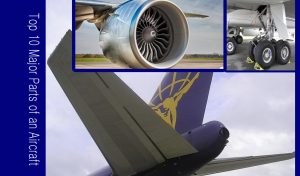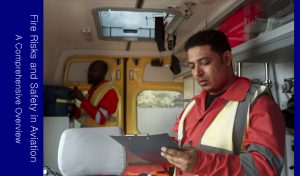Soaring through the skies in an aircraft is an exhilarating experience. However, it’s not just the engines and wings that keep us up there; it’s also a delicate of weight and balance in Aviation. In this comprehensive guide, we will take you through the essential aspects of aircraft weight and balance. From understanding the basics to ensuring safety, we’ve got you covered.
Introduction
Imagine an aircraft as a finely tuned ballet dancer gracefully gliding through the sky. To maintain that elegance and ensure safety, a delicate equilibrium of weight and balance is critical. In this article, we’ll delve deep into the principles, importance, and real-life applications of managing weight and balance in aircraft. So, fasten your seatbelts, and let’s take off!.

The Fundamental Principles of Weight and Balance
Finding the Center of Gravity
Weight and balance are fundamental principles in aviation that are crucial for the safe operation of aircraft. Proper weight and balance management ensures that an aircraft is stable, controllable, and capable of performing within its specified limits. Here are the fundamental principles of weight and balance in aviation:
- Center of Gravity (CG):
- The center of gravity is the point at which an aircraft’s weight is concentrated, and it is a critical parameter for stability and control.
- The CG is typically measured as a percentage of the mean aerodynamic chord (MAC) or as an arm length from a reference point, such as the datum.
- Proper CG placement is essential for maintaining longitudinal stability, as an aircraft must be balanced with the CG within specified limits.
- Weight:
- Weight is the force exerted by gravity on an aircraft and its contents.
- Weight is affected by the mass of the aircraft, fuel, passengers, cargo, and other equipment on board.
- Aircraft must not exceed their maximum certified takeoff weight (MTOW) or maximum landing weight (MLW) to ensure safe operation.
- Balance:
- Balance refers to the distribution of weight within an aircraft along its longitudinal, lateral, and vertical axes.
- Proper balance ensures that the aircraft is stable and controllable during various phases of flight.
- Balance calculations must consider the distribution of passengers, cargo, and fuel to maintain the desired CG location.
- Limits and Ranges:
- Aircraft manufacturers establish weight and balance limits and ranges for each aircraft model, and these are outlined in the aircraft’s operating manual.
- The limits are specified as maximum and minimum values for both weight and CG location.
- Operating within these limits is essential for safe and efficient flight.
- Weight and Balance Calculations:
- Pilots and ground personnel must perform weight and balance calculations before every flight.
- These calculations involve determining the weight of the aircraft, its components, passengers, and cargo, as well as calculating the location of the CG.
- Special attention is paid to the distribution of weight along the longitudinal axis to ensure proper balance.
- Load Planning:
- Load planners or dispatchers are responsible for ensuring that cargo and passengers are distributed properly to maintain the correct CG location.
- Cargo and baggage should be loaded according to established procedures and cargo restraint systems, and the loading process should be documented.
- Effects of Weight and Balance:
- An aircraft with an out-of-balance CG may exhibit stability and control issues, potentially leading to an uncontrollable situation.
- Weight and balance considerations also affect performance parameters, such as takeoff and landing distances and fuel consumption.
- Control Surfaces and Trim:
- The position of control surfaces, such as elevators, ailerons, and rudders, may need adjustment to compensate for variations in weight and balance.
- Trim systems are used to maintain the desired flight attitude and reduce control forces when the CG location changes.
Why is Weight and Balance Important?
Safety & Fuel Efficiency
Weight and balance are of paramount importance in aviation for several reasons:
- Safety: Proper weight and balance are critical for the safe operation of an aircraft. If an aircraft is loaded improperly, it can lead to unstable flight characteristics, making the aircraft difficult to control or even leading to a loss of control. Maintaining the center of gravity (CG) within specified limits is essential for safe flight.
- Stability and Control: Correct weight and balance ensure that the aircraft remains stable and controllable during various phases of flight, including takeoff, climb, cruise, descent, and landing. When an aircraft is properly balanced, it responds predictably to control inputs.
- Performance: Weight and balance directly affect an aircraft’s performance. If an aircraft is too heavy or if the CG is in the wrong position, it may have longer takeoff and landing distances, reduced climb rates, and decreased fuel efficiency. Proper weight and balance contribute to efficient flight operations.
- Compliance with Regulations: Aviation authorities, such as the Federal Aviation Administration (FAA) in the United States, impose regulations that require aircraft to be operated within specified weight and balance limits. Compliance with these regulations is a legal requirement for all flights.
- Load Distribution: Correct weight and balance distribution ensures that the load is evenly distributed throughout the aircraft. This is essential for passenger comfort and safety, as well as to prevent overstressing the aircraft’s structure. Proper load distribution is particularly critical in larger commercial aircraft.
- Prevention of Structural Damage: An aircraft that is loaded outside of its specified weight and balance limits can experience structural damage, particularly during turbulence or other stress-inducing conditions. This can lead to costly repairs and compromises safety.
- Fuel Efficiency: Proper weight and balance contribute to optimal fuel efficiency. When an aircraft is balanced correctly, it requires less control input to maintain a desired attitude, reducing drag and fuel consumption.
- Emergency Situations: In emergency situations, such as engine failures or adverse weather conditions, having a properly balanced aircraft can make it easier for pilots to manage and control the aircraft.
Weight and Balance in Aircraft Design
The Role of Aircraft Engineering & Aircraft Materials
Weight and balance are fundamental considerations in aircraft design, influencing the design process, structural integrity, performance, and safety of the aircraft. Here’s how weight and balance play a crucial role in aircraft design:
- Design Criteria:
- Aircraft designers establish specific design criteria, including maximum takeoff weight (MTOW), maximum landing weight (MLW), and center of gravity (CG) limits. These criteria are based on the intended mission, performance, and safety requirements of the aircraft.
- Structural Integrity:
- The aircraft’s structure, including the materials used, size and placement of components, and structural reinforcement, must be designed to support the weight and forces experienced during flight. Overloading an aircraft can lead to structural failures, so designers ensure that the structure can withstand these loads.
- Payload and Systems:
- Aircraft designers must account for the weight of various systems, such as engines, avionics, landing gear, fuel tanks, and cabin furnishings. These components contribute to the total weight of the aircraft, and their placement impacts the CG.
- Weight Reduction Strategies:
- To improve performance and fuel efficiency, designers often employ weight reduction strategies, including the use of lightweight materials (e.g., composites), optimization of component design, and efficient use of space within the aircraft. Reducing weight helps maximize payload and range.
- Center of Gravity (CG):
- The CG location affects the aircraft’s stability and control. Designers ensure that the aircraft’s components, including engines and fuel tanks, are placed in such a way that the CG remains within specified limits throughout the flight envelope.
- Aerodynamics:
- Proper weight distribution is essential for aerodynamic efficiency. The design must consider the positioning of major components to minimize drag and optimize lift. An unbalanced design can lead to inefficiencies, requiring more power for the same performance.
- Fuel Systems:
- Fuel tanks are critical components in weight and balance considerations. Designers must ensure that fuel is evenly distributed and that the aircraft remains balanced as it burns fuel during flight.
- Payload Flexibility:
- Designers aim for flexibility in payload capacity and distribution to accommodate various missions. This can include cargo, passengers, and mission-specific equipment. The design must allow for easy adjustments in payload distribution without compromising safety.
- Flight Testing and Certification:
- Weight and balance data are collected during the flight testing phase. The aircraft is tested to ensure it meets specified CG and weight limits, as well as its intended performance goals. These tests are essential for obtaining airworthiness certification.
- Regulatory Compliance:
- Aircraft designers must ensure that the final design complies with aviation regulations, which often include strict weight and balance limits. Failure to meet these regulations can result in delays or redesign of the aircraft.
- Safety and Handling:
- Designers consider the weight and balance to ensure the aircraft is safe to handle on the ground and in-flight. Proper weight distribution is necessary for predictable handling characteristics and safe operations during emergencies.
Calculating Aircraft Weight
Empty Weight
The “Empty Weight” of an aircraft, often referred to as Basic Empty Weight (BEW), is a critical component in the calculation of an aircraft’s total weight. The Empty Weight represents the weight of the aircraft when it is empty and devoid of any payload, including passengers, cargo, and other specific mission equipment. The BEW includes the weight of the aircraft’s essential components, standard equipment, and operating fluids. Here’s a more detailed breakdown of the elements included in the Basic Empty Weight:
- Aircraft Structure and Components: This includes the weight of the entire airframe, including the fuselage, wings, landing gear, control surfaces, and other structural elements. The specific design of the aircraft and materials used in its construction contribute to this weight.
- Powerplant Weight: The powerplant components, which include engines, propellers (for propeller-driven aircraft), and engine accessories, are part of the Basic Empty Weight.
- Avionics and Equipment: Standard avionics equipment, such as radios, navigation instruments, and communication systems, is included in the BEW. Any specialized mission equipment (e.g., sensors for surveillance aircraft) might also be considered here.
- Furnishings and Interiors: This category encompasses the weight of passenger seats, lavatories, galleys, cabin fixtures, and furnishings. The specific configuration of the cabin or interior components can influence this weight.
- Operating Fluids: Basic operating fluids required for the aircraft to operate safely and efficiently, such as engine oil, hydraulic fluid, and water for lavatories, are included in the BEW.
- Spare Parts and Standard Equipment: Spare parts that the aircraft carries for maintenance and standard equipment that is not part of the optional mission-specific equipment are also factored into the Basic Empty Weight.
- Standard Crew: The weight of the standard crew members (e.g., the pilot and co-pilot) is generally considered in the BEW.
Useful Load
The “Useful Load” is a crucial concept in aircraft weight and balance calculations and refers to the maximum weight that an aircraft can carry, including passengers, cargo, and any additional equipment. It represents the payload capacity of the aircraft, and it’s calculated as the difference between the maximum allowable takeoff weight (MTOW) and the basic empty weight (BEW) of the aircraft.
Here’s how the concept of Useful Load fits into the calculation of aircraft weight:
- Basic Empty Weight (BEW):
- The Basic Empty Weight is the weight of the aircraft when it is empty, devoid of any payload or passengers, but includes essential operating fluids (e.g., engine oil, hydraulic fluid), standard equipment, and structural components.
- Useful Load:
- The Useful Load is the maximum allowable weight that can be added to the aircraft in the form of passengers, cargo, and mission-specific equipment. It is a key figure that defines the aircraft’s payload-carrying capability.
- Maximum Allowable Takeoff Weight (MTOW):
- The Maximum Allowable Takeoff Weight is the maximum weight at which an aircraft is certified to take off safely under specified conditions. It includes the BEW, Useful Load, and the weight of fuel.
The Useful Load is calculated as:
Useful Load = MTOW – BEW
The Useful Load varies by aircraft type and model and depends on several factors, including the aircraft’s structural strength, performance capabilities, and the amount of fuel required for a specific flight. It is determined during the aircraft’s design and certification process and is documented in the aircraft’s weight and balance manual.
Within the Useful Load, you have the flexibility to allocate weight to passengers, cargo, and mission-specific equipment. This allows operators to configure the aircraft for different missions, such as passenger transport, cargo transport, or specialized operations like medical evacuation or aerial surveying.
Payload
The term “Payload” in aircraft weight and balance calculations refers to the total weight of passengers, cargo, baggage, and any additional equipment or items that an aircraft is designed to carry for a specific flight. Payload is a critical component of the aircraft’s total weight and is essential to ensure that an aircraft is loaded within its certified weight limits.
When calculating the payload weight for a specific flight, you should consider the following elements:
- Passengers: This includes the weight of all passengers on board, including adults, children, and infants. The average weight per passenger is typically used, and it may vary depending on regulations and standards in different regions.
- Cargo: Cargo weight comprises any freight, packages, or items being transported on the aircraft. The weight of individual cargo items should be measured or estimated accurately.
- Baggage: Baggage weight includes the belongings of passengers, such as suitcases, carry-on bags, and personal items. The weight of baggage is typically determined by using an average weight per passenger for checked baggage.
- Additional Equipment: If the flight requires specialized equipment or mission-specific items, their weight should be included in the payload. For example, specialized medical equipment for medical evacuation flights or surveying equipment for aerial surveys.
- Fuel: The weight of fuel is generally not considered part of the payload. Instead, it is treated as part of the aircraft’s operating weight. However, the fuel weight is a critical component in the overall weight and balance calculations, as it affects the aircraft’s total weight.
The payload weight is determined by adding the weights of all the components mentioned above. When combined with the Basic Empty Weight (BEW) of the aircraft, the payload weight contributes to the total weight for a specific flight.
Total Weight = Basic Empty Weight (BEW) + Payload Weight
It is essential to ensure that the total weight, including the payload, does not exceed the maximum allowable takeoff weight (MTOW) specified by the aircraft manufacturer and aviation authorities. Overloading an aircraft can lead to performance and safety issues, including difficulties related to maintaining the aircraft’s proper balance and stability during flight.
Weight and balance calculations are critical for safe and efficient flight operations, and they play a significant role in the pre-flight planning and preparation of an aircraft for its intended mission.
Finding the Center of Gravity
Balance Point & Balance Limits
Finding the center of gravity (CG) of an aircraft is a crucial step in ensuring that the aircraft is balanced and stable during flight. The CG location is a key factor in weight and balance calculations. To determine the center of gravity, you’ll need to follow these steps:
- Refer to the Aircraft Documentation:
- Consult the aircraft’s weight and balance manual, as well as the aircraft’s type certificate data sheet or equivalent documentation. These sources will provide you with important information about the aircraft’s CG limits and reference datum point.
- Identify the Datum Point:
- The datum point is a fixed reference point on the aircraft, typically located in the nose or another specific location. All measurements for weight and balance are taken from this point. The datum is often specified in inches or centimeters aft of a designated reference point on the aircraft, such as the nose or a wing leading edge.
- Locate the Measurement Points:
- The aircraft manufacturer provides specific locations, often in inches or centimeters forward or aft of the datum, where you should take weight and balance measurements. These locations are typically found in the aircraft’s weight and balance manual.
- Gather Weight Data:
- Collect data on the weights of all items on the aircraft, including the aircraft’s basic empty weight (BEW), passengers, cargo, fuel, and any additional equipment. Ensure that all weights are expressed in the same units (e.g., pounds or kilograms).
- Determine Arm Lengths:
- For each weight item, determine its arm length, which is the distance from the datum point to the center of gravity of that item. You’ll need to use the appropriate arm length for each component.
- Calculate Moments:
- To calculate the moment for each item, multiply its weight by its arm length. The moment is a measure of the tendency of the weight to rotate about the datum point.
- Sum the Moments and Weights:
- Add up all the individual moments to obtain the total moment. Similarly, sum up all the individual weights to obtain the total weight.
- Calculate the Center of Gravity (CG):
- The CG location is determined by dividing the total moment by the total weight:
- Check CG Limits:
- Compare the calculated CG location to the aircraft’s specified CG limits. Ensure that the CG is within the allowable range to maintain safe flight characteristics. If the CG is out of limits, the aircraft’s load must be adjusted to bring it within limits.
- Document and Record:
- Document all calculations and measurements, and record the CG location in the aircraft’s weight and balance record. This information is crucial for pre-flight planning and ensuring safe and stable flight.
Remember that the CG location can change as passengers, cargo, and fuel are added or removed from the aircraft. Frequent weight and balance checks and calculations are essential for maintaining safe flight operations.
The Loading Process
Distributing Weight
Distributing weight correctly during the loading process of an aircraft is essential to maintain proper balance, stability, and control throughout the flight. The goal is to ensure that the aircraft’s center of gravity (CG) remains within the specified limits. Here are some key considerations for distributing weight during the loading process:
- Aircraft Documentation: Refer to the aircraft’s weight and balance manual or documentation to understand the allowable CG range and any specific loading instructions provided by the manufacturer.
- Passenger Seating: Passengers should be seated in accordance with the seating plan, which is typically designed to distribute weight evenly throughout the aircraft. Ensure that passengers are seated in their assigned seats.
- Balancing Fore and Aft Load: Distribute weight evenly between the front and rear sections of the aircraft. If passengers or cargo are concentrated in one area, it can cause an out-of-balance condition, affecting the CG.
- Use Loading Charts: Some aircraft may have loading charts or tables that provide specific weight and balance information, such as the allowable weights for different seat rows. Refer to these charts for guidance.
- Cargo and Baggage: Cargo, baggage, and any additional equipment should be stowed and secured in designated areas based on the loading plan. Distribute the weight of cargo evenly, both longitudinally and laterally.
- Weight Shift Considerations: Be mindful of any items that may shift their weight during flight. Properly secure these items to prevent sudden shifts that could affect the CG.
- Mission-Specific Equipment: If the flight involves mission-specific equipment (e.g., surveillance equipment, medical devices), ensure that this equipment is positioned and secured as per the loading plan.
- Fuel Management: Fuel weight and its distribution are critical. Distribute fuel as evenly as possible between the aircraft’s fuel tanks. Fuel burn will gradually change the CG during the flight, so maintaining an even distribution is essential.
- Adjustable Seats: In aircraft with adjustable seats, ensure that passengers adjust their seats to a position that maintains proper balance. Avoid extreme positions that could affect the CG.
Cargo Holds and Their Role
Cargo holds play a significant role in the loading process of an aircraft, particularly in the transportation of cargo, baggage, and freight. These specialized compartments are designed to safely stow and secure various types of cargo, ensuring that the weight and balance of the aircraft are properly maintained. Here’s a closer look at the role of cargo holds in the loading process:
- Secure Stowage: Cargo holds provide a secure and controlled environment for the storage of cargo and baggage. They are equipped with fixtures, straps, and restraints to prevent cargo from shifting or becoming dislodged during flight, which is essential for both safety and the prevention of damage.
- Weight Distribution: Cargo holds are strategically located within the aircraft to help distribute weight effectively. Placing cargo in designated compartments allows for a more even distribution of weight along the longitudinal and lateral axes of the aircraft, aiding in achieving the correct center of gravity (CG).
- Separation from Passengers: Cargo holds are typically located in separate compartments from the passenger cabin, which enhances safety and comfort for passengers. This separation ensures that passengers are not exposed to potentially hazardous or noisy cargo.
- Dedicated Loading Procedures: Loading cargo into these holds involves dedicated procedures and personnel who are trained in proper cargo handling. This ensures that cargo is loaded and secured correctly, taking into account the specific requirements of different types of cargo.
- Cargo Types: Cargo holds can accommodate a wide range of cargo types, from baggage and mail to specialized cargo, such as perishable goods, hazardous materials, and oversized freight. Different cargo holds may have specific configurations and features to meet the needs of various cargo types.
- Temperature Control: Some cargo holds are equipped with environmental control systems to maintain specific temperature and humidity conditions. This is particularly important for transporting perishable goods, live animals, or sensitive cargo.
- Security: Cargo holds are equipped with security measures to prevent unauthorized access and protect the contents during loading, transit, and unloading.
- Load Planning: Cargo holds are an integral part of load planning. Cargo load planners determine the optimal placement of cargo in the holds to ensure proper weight and balance, as well as to minimize handling and loading time.
- Accessibility: Cargo holds have access doors and hatches that allow ground personnel to load and unload cargo efficiently. These access points are designed for ease of use and are often equipped with equipment like conveyors or cargo loaders to facilitate loading.
- Weight and Balance Considerations: Loading cargo into these holds is done while keeping weight and balance considerations in mind. The weight and balance of the aircraft must remain within specified limits to ensure safe flight.
- Cargo Documentation: All cargo items are documented, labeled, and matched with cargo manifests to ensure that the aircraft is loaded according to the plan and that proper records are maintained.
- Supervised Loading: Cargo loading is typically supervised by qualified personnel, such as loadmasters, who ensure that cargo is distributed correctly and that weight and balance limits are adhered to.
Effects of Imbalanced Weight
Stability and Control & Handling Challenges
Imbalanced weight in an aircraft can have serious consequences, affecting its stability, control, and overall performance. It’s essential to maintain proper weight and balance to ensure the safe and efficient operation of the aircraft. Here are some of the key effects of imbalanced weight:
- Loss of Stability and Control:
- One of the most critical effects of imbalanced weight is the loss of stability and control. When the aircraft’s center of gravity (CG) is located outside of the specified limits, it can become difficult to maintain stable flight. The aircraft may exhibit tendencies to pitch, roll, or yaw uncontrollably.
- Elevated Stall Speed:
- An aircraft with an aft CG tends to have a higher stall speed, which means it requires a higher airspeed to maintain lift. This can increase the risk of a stall during takeoff or landing.
- Reduced Maneuverability:
- Imbalanced weight can lead to reduced maneuverability. The aircraft may become less responsive to control inputs, making it more challenging to perform standard flight maneuvers, such as turns and climbs.
- Elevated Fuel Consumption:
- An aircraft with an imbalanced weight distribution may experience increased fuel consumption. Pilots may need to apply more power to maintain desired airspeeds, leading to higher fuel consumption.
- Longer Takeoff and Landing Distances:
- Imbalanced weight can result in longer takeoff and landing distances. This is particularly dangerous if the aircraft requires more runway length for takeoff or landing than is available.
- Aerodynamic Instability:
- Imbalanced weight can lead to aerodynamic instability, causing the aircraft to oscillate or experience unintended changes in attitude, which can be difficult to control.
- Control Surface Overuse:
- Pilots may need to use control surfaces more aggressively to counteract the effects of an imbalanced weight distribution. This can lead to increased control inputs and potentially cause fatigue for the flight crew.
- Structural Stress:
- Imbalanced weight can result in uneven stress on the aircraft’s structure, potentially leading to structural damage or fatigue. Over time, this can impact the integrity of the airframe.
- Increased Risk of In-Flight Upsets:
- Imbalanced weight can increase the risk of in-flight upsets, such as stalls, spins, and sudden uncontrolled movements, which can be challenging to recover from, especially at low altitudes.
- Inadequate Tail and Control Surface Authority:
- In the case of an extreme aft CG, the aircraft may experience inadequate tail and control surface authority, making it difficult to control or recover from unusual attitudes or upsets.
- Regulatory Non-Compliance:
- Operating an aircraft with an imbalanced weight can lead to regulatory non-compliance, potentially resulting in operational restrictions, fines, or the grounding of the aircraft.
Importance of Regular Weighing
Routine Maintenance & Changes in Aircraft Configuration
Regular weighing of an aircraft is crucial for several reasons, and it plays a significant role in ensuring the safety, efficiency, and compliance of flight operations. Here are some key reasons why regular weighing of aircraft is important:
- Safety: Ensuring the aircraft is within specified weight and balance limits is fundamental to aviation safety. Overloading or an imbalanced aircraft can lead to unstable flight characteristics, making the aircraft difficult to control and increasing the risk of accidents.
- Compliance: Aviation authorities, such as the Federal Aviation Administration (FAA) in the United States, impose regulations that require aircraft to be operated within specific weight and balance limits. Regular weighing is necessary to demonstrate compliance with these regulations, which is a legal requirement for all flights.
- Aircraft Performance: Proper weight and balance contribute to optimal aircraft performance. When an aircraft is balanced correctly, it operates efficiently, achieving desired airspeeds and fuel efficiency. Overweight or improperly balanced aircraft may experience reduced performance.
- Center of Gravity (CG) Control: Maintaining the CG within specified limits is essential for stable and controllable flight. Regular weighing helps to monitor and control the CG, preventing it from shifting outside safe boundaries.
- Prevention of Structural Damage: Regular weighing helps identify weight distribution issues that could lead to structural damage, especially during turbulence, hard landings, or other stress-inducing conditions. Preventing structural damage saves on costly repairs and extends the lifespan of the aircraft.
- Fuel Efficiency: Proper weight and balance contribute to fuel efficiency. Balanced aircraft require less control input to maintain a desired attitude, which reduces drag and fuel consumption.
- Emergency Situations: In emergency situations, such as engine failures or adverse weather conditions, having a properly balanced aircraft makes it easier for pilots to manage and control the aircraft.
- Aircraft Handling: Regular weighing is essential for maintaining predictable and manageable flight characteristics. A well-balanced aircraft is safer and less physically demanding for the flight crew.
- Weight and Balance Updates: Over time, the weight and balance of an aircraft can change due to modifications, equipment upgrades, or variations in the weight of passengers and cargo. Regular weighing ensures that the aircraft’s weight and balance data are up to date.
- Prevent Overloading: Regular weighing helps identify and prevent overloading, which can lead to dangerous situations, particularly during takeoff and landing.
- Regulatory Compliance: Regular weighing and documenting weight and balance data are critical for meeting regulatory requirements. It provides the necessary documentation to demonstrate compliance with weight and balance regulations to aviation authorities.
- Insurance and Liability: Many insurance policies and liability considerations require aircraft owners and operators to maintain accurate weight and balance records and regularly weigh the aircraft to mitigate risks.
Weight and Balance Software
Modern Tools for Precision
Weight and balance software is a specialized tool used in aviation to calculate and manage the distribution of weight and balance within an aircraft. It is essential for ensuring that an aircraft is loaded within its specified weight limits and that the center of gravity (CG) remains within allowable ranges for safe and efficient flight. Here are some examples of well-known weight and balance software used in the aviation industry:
- APG iLoad: APG iLoad is a comprehensive weight and balance software designed for aircraft operators. It provides features for calculating weight and balance, load planning, and performance analysis. The software is known for its accuracy and ease of use.
- SkyBOOKS W&B: SkyBOOKS offers weight and balance software as part of its aviation fleet management solutions. It allows operators to input data, calculate CG, and generate load manifests. The software also offers reporting and record-keeping capabilities.
- Flightman Weight and Balance: Flightman provides weight and balance software that integrates with electronic flight bags (EFBs) and flight management systems (FMS). It enables real-time updates, load distribution, and monitoring of weight and balance conditions during flight.
- Loadstar: Loadstar is a cloud-based weight and balance software solution that offers real-time data access and collaboration for aircraft operators and load planners. It includes features for CG calculations, load planning, and load manifest generation.
- AeroLOAD: AeroLOAD is a weight and balance software solution designed for airlines and aviation operators. It offers advanced load planning and CG calculation capabilities, as well as the ability to handle various aircraft types and configurations.
- PDC-WABs: PDC-WABs is a popular weight and balance software used in the aviation industry. It is known for its accuracy and the ability to handle complex load planning scenarios for different types of aircraft.
- iFlightPlanner: iFlightPlanner offers an integrated flight planning platform that includes weight and balance calculations. It allows pilots to input data for the aircraft, passengers, cargo, and fuel to ensure proper weight distribution.
- AviationDocs Load Control: AviationDocs provides a load control system with weight and balance functionality. It offers features for weight calculations, CG calculations, and load planning, along with real-time updates and collaboration capabilities.
- Leon Weight and Balance: Leon is an aviation operations software that includes a weight and balance module. It allows operators to manage aircraft weight and balance, load planning, and compliance with aviation regulations.
- Safelog: Safelog is a comprehensive aviation management system that includes weight and balance functionality. It offers features for calculating CG, generating load manifests, and tracking weight and balance records.
Conclusion
In the world of aviation, where safety and efficiency are paramount, understanding and managing weight and balance is a non-negotiable. It’s the invisible force that keeps your flight safe and smooth. So, next time you board an aircraft, know that there’s a lot more to it than just getting off the ground.
FAQs
Q1: What happens if an aircraft is too heavy?
A1: Exceeding the maximum weight limit can compromise safety and lead to decreased maneuverability.
Q2: Can passengers’ positions affect the center of gravity?
A2: Yes, passengers’ positions can impact the center of gravity; it’s essential to distribute weight evenly.
Q3: Are there weight restrictions on carry-on luggage?
A3: Yes, airlines impose limits on carry-on baggage to ensure a balanced load.
Q4: How do pilots monitor weight and balance during a flight?
A4: Pilots use onboard computers to continuously assess weight and balance during the flight.
Q5: Does the type of cargo matter for weight distribution?
A5: Absolutely, the type of cargo and its placement can significantly affect the aircraft’s balance.
So, the next time you’re on a flight, you’ll have a deeper appreciation for the intricate dance of weight and balance that keeps you soaring smoothly through the skies.









